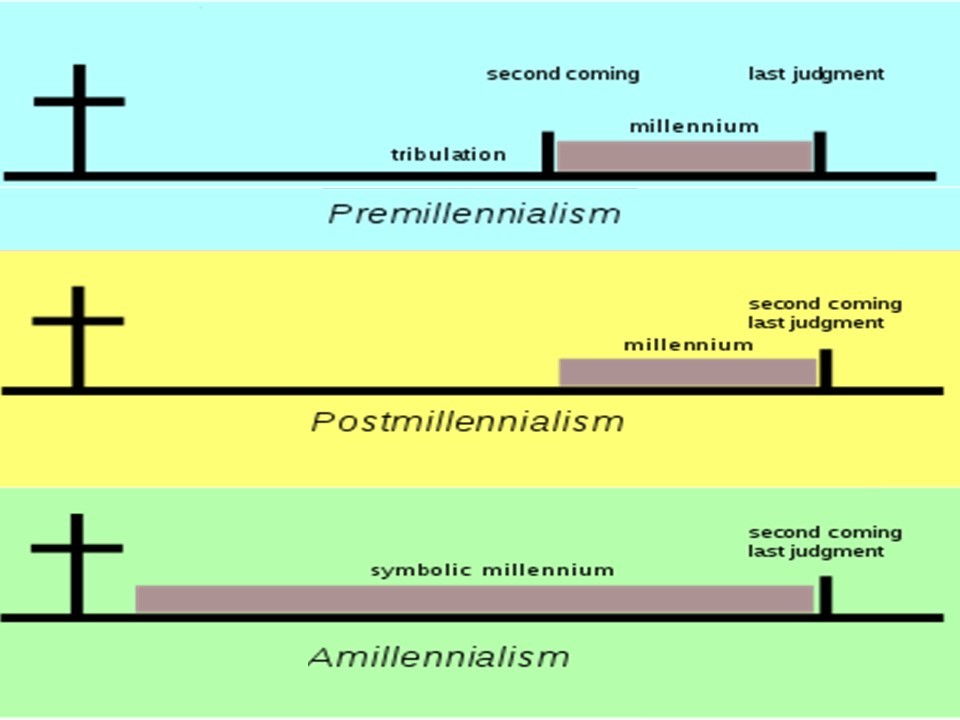BLOG

The Three Main End-time Views Simplified

Prophecy is not as confusing as we make it. One of the problems out there is that there is so much material to weed through. Not all sermons, study tools, commentaries, and other resources are created equal. Some of the confusion from your study and with the messages bouncing around in your head that you have heard are because they are apples and oranges. Actually in the case of biblical end-time prophecy it is best said that there are apples, oranges, and bananas.
There are three main interpretations of the “layout” of biblical prophecy. There are variations of each of the three, but if you can learn to recognize and work within these three your understanding of prophecy will become clearer.
For your own study and understanding of prophecy you need to decide which of the three you espouse and study from that interpretative framework. Also when you are studying or listening to a message you need to recognize which of the three views the author or preacher espouses.
The three views are based off of two things the Millennium and the Second Coming of Jesus. The Second Coming of Jesus is when He “touches down” on earth physically. The millennium is the 1,000 year rule of Jesus on earth that is explained in Revelation chapter 20. A straight forward, literal reading of the passage explicitly says that Satan will be bound for a 1,000 years as Jesus rules from Jerusalem. Then after that 1,000 years Satan would be let loose for a short time. Although this is the only Scripture passage that mentions the 1,000 year time frame, it is not the only passage about Jesus ruling on earth. Almost all of the Old Testament prophecies wrote about the Messiah establishing a kingdom on earth and ruling from Jerusalem.
Here are the views:
- Premillennialism
The prefix is the key to remembering this term. “Pre” means before. So this terms says that Jesus would return before the millennium. This view also states that there will be a literal, physical millennium kingdom. Jesus would physically rule from Jerusalem. This is the predominant view of present day evangelicalism. It seems to have been the view of the early Christians. There are two main variations of the view Classical Premillennialism and Dispensational Premillennialism.
- Postmillennialism
Again the prefix is the key to remembering this term. “Post” means after. So this terms says that Jesus would return after the millennium. This view says that we are currently living in the millennium. Proponents of this view differ in the view of the time frame of the millennium some still believe it is a literal 1,000 years while some believe it is an undetermined amount of time. Both sides do agree that that Jesus rules spiritually through the church, and that the spread of the church and Christian values will bring about the promised peace written about in Revelation 20 and elsewhere in Scripture. This view became popular in the 17th century. It began to wane during the World Wars, but can still be found today. Some would argue that the millennium hasn’t even started and is still to come, but Jesus would not return until Christianity ruled the world.
- Amillennialism
Again the prefix is the key to remembering this term, but unlike the previous two interpretative views this prefix does not apply to the return of Jesus, but rather the existence of the Millennium. “A” means not. So this term states that there will be no 1,000 year rule of Jesus. Proponents still believe Jesus would return, but they see Revelation 20 as being only symbolic.
For one to begin to understand end-time prophecy they have to select an interpretive view to follow. But let me be clear it is not a buffet where any view is fine — just pick one. The interpretative view must arise from the text itself. So you need to take seriously which view you espouse. You need to let Scripture itself show how it should be interpreted. If the particular passage or biblical book does not give clear direction then it needs to be interpreted like other prophecy passages.
So seek the Lord and study on how the text should be interpreted and prayerfully discern the end-time prophecy layout. Recognize what view the preacher you are listening to is following or the author you are reading — it is important to know if you are studying an apple, orange, or banana.
